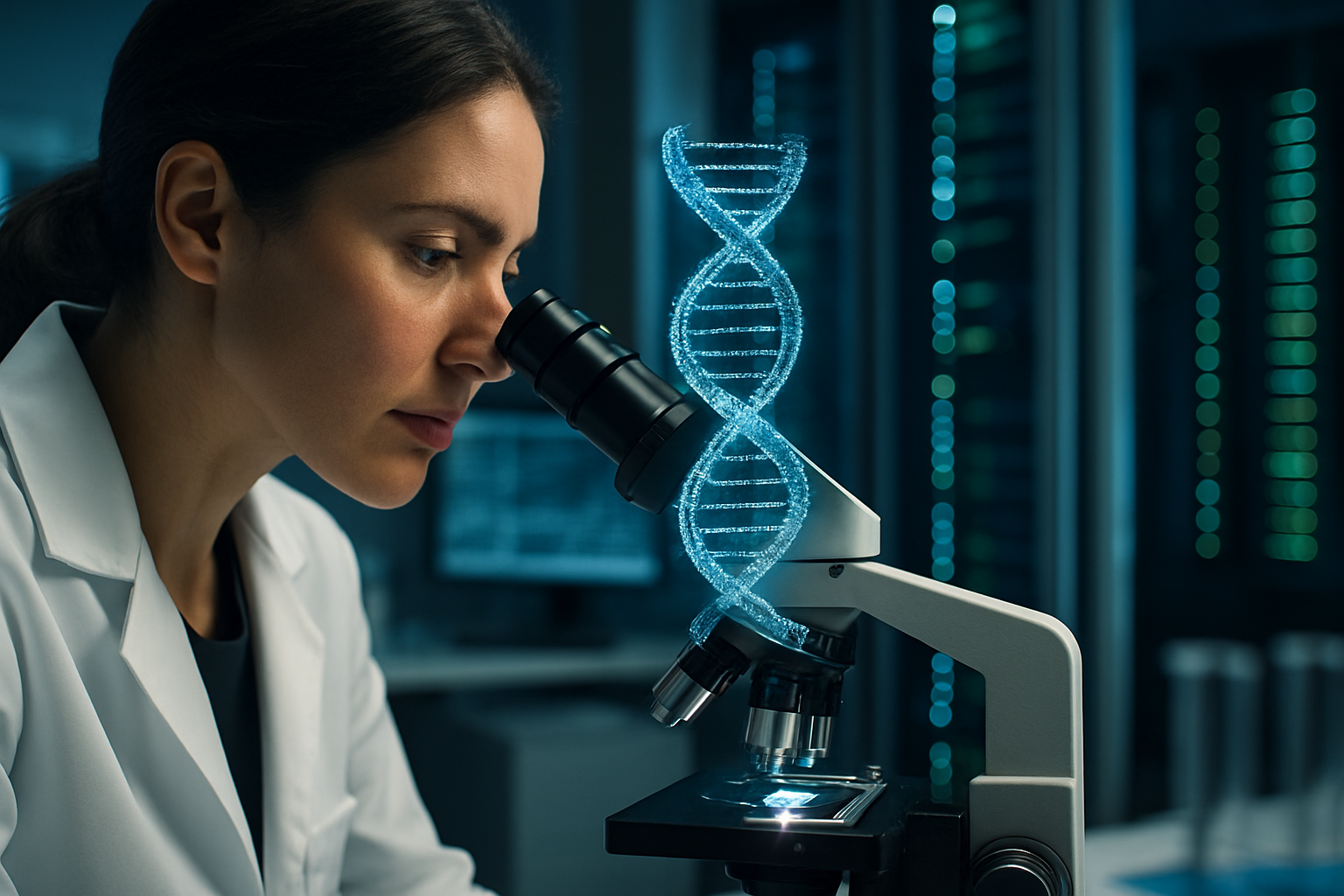DNA-Based Digital Storage: Computing's Next Memory Revolution
Silicon memory has dominated computing for decades, but as data demands grow exponentially, researchers are turning to an ancient information carrier: DNA. These microscopic molecules that encode our genetic makeup might soon store our digital lives too – offering storage densities millions of times greater than conventional media, with lifespans measured in thousands of years rather than decades. The convergence of biology and computing isn't just theoretical anymore – it's becoming a commercial reality as major tech companies invest in transforming how we preserve humanity's growing digital heritage.

The perfect storage medium has been here all along
Our digital universe is expanding at a staggering pace. By 2025, experts project we’ll generate 175 zettabytes of data globally – that’s 175 trillion gigabytes. Current storage technologies are struggling to keep pace with this exponential growth, both in capacity and durability. Magnetic hard drives typically last 3-5 years, while even archival-grade optical media deteriorates within decades. Enter nature’s own information storage system: deoxyribonucleic acid.
DNA evolved over billions of years specifically to store information with remarkable efficiency. A single gram can theoretically hold 215 petabytes (215 million gigabytes) of data – enough to store the entire Library of Congress dozens of times over. More impressively, under proper conditions, DNA remains readable for thousands of years, as evidenced by genetic material recovered from ancient specimens. The molecule’s four-base encoding system (A, T, G, C) makes it fundamentally digital, albeit in a different language than computing’s binary.
How DNA digital storage actually works
The process of storing digital data in DNA involves several steps that bridge computing and biochemistry. First, conventional binary data (0s and 1s) is converted into DNA’s four-letter alphabet. Engineers have developed various encoding schemes that translate binary sequences into combinations of the four DNA nucleotides – adenine, thymine, guanine, and cytosine.
Once encoded, the data is synthesized into actual DNA strands using specialized equipment. These physical DNA molecules containing the encoded information can then be stored in simple, climate-controlled environments. When retrieval is necessary, the DNA is sequenced – the same technology used in genomic research – and the resulting data is decoded back into binary format using the original encoding scheme.
The most crucial advantage is that DNA doesn’t require electricity for storage, eliminating a significant cost of conventional data centers. Additionally, its volumetric density outperforms any existing or theoretical storage technology by orders of magnitude.
The economics of biological bytes
Despite its promising benefits, DNA data storage currently faces significant economic barriers. The primary hurdle is cost – synthesizing custom DNA sequences remains expensive, with prices hovering around $0.001 per base. For context, storing a single gigabyte would cost roughly $100,000 at current rates, compared to mere cents for conventional storage.
The technology’s true promise lies in its trajectory. DNA synthesis costs have been dropping dramatically – nearly 12-fold over the past decade – following a curve reminiscent of Moore’s Law in computing. Industry analysts project that DNA storage could become economically viable for long-term archival storage within 5-10 years, particularly for “cold storage” applications where infrequent access justifies higher write costs in exchange for longevity and density.
Major players including Microsoft and Twist Bioscience have formed the DNA Data Storage Alliance to accelerate development and standardization. Their roadmaps suggest commercial applications could emerge sooner than expected, with early adopters likely being national archives, scientific institutions, and enterprise customers with regulatory requirements to maintain data for decades.
Real-world experiments pushing boundaries
While theoretical potential is impressive, practical implementations are what truly matter. In 2019, researchers at the University of Washington and Microsoft demonstrated storing and retrieving 1GB of data in DNA, including high-definition video files. More remarkably, they developed a fully automated end-to-end system for writing, storing, and reading data – a crucial step toward practical applications.
Catalog, a Boston-based startup, made headlines by storing all 16GB of Wikipedia’s English text in DNA molecules. Their approach uses prefabricated DNA molecules assembled in different patterns rather than synthesizing custom sequences, potentially offering significant cost reductions.
The Church Lab at Harvard has pushed the envelope further by developing in vivo DNA storage – embedding data directly into living bacterial cells that replicate the information as they reproduce. In 2017, they encoded and retrieved a short movie from bacterial DNA, demonstrating how living organisms could become self-replicating storage media.
Challenges and the path forward
Despite rapid progress, several technical hurdles remain before DNA storage becomes mainstream. Error rates in both synthesis and sequencing need improvement, though researchers have developed robust error-correction codes to mitigate these issues. Write speeds remain painfully slow compared to electronic storage, though read operations have seen significant acceleration through advanced sequencing technologies.
Perhaps the biggest challenge is integration with existing computing infrastructure. Current DNA storage operations require specialized laboratory equipment and expertise. For widespread adoption, the technology needs standardized interfaces and equipment that can function within traditional data centers.
Forward-thinking organizations aren’t waiting for perfection. Semiconductor manufacturer Micron has invested in DNA storage research as a potential complement to its flash memory business. Entertainment companies like Warner Bros. have begun exploring DNA storage for film preservation, recognizing its potential for multi-century archiving of cultural heritage.
While DNA won’t replace SSDs in smartphones anytime soon, its emergence represents a fascinating cross-pollination of biology and computing – potentially solving one of the digital age’s most pressing problems by turning to the molecular machinery that has been storing information since life began. As costs continue falling and techniques improve, we may soon find our most precious digital memories preserved in the same molecular format as our genetic heritage.





